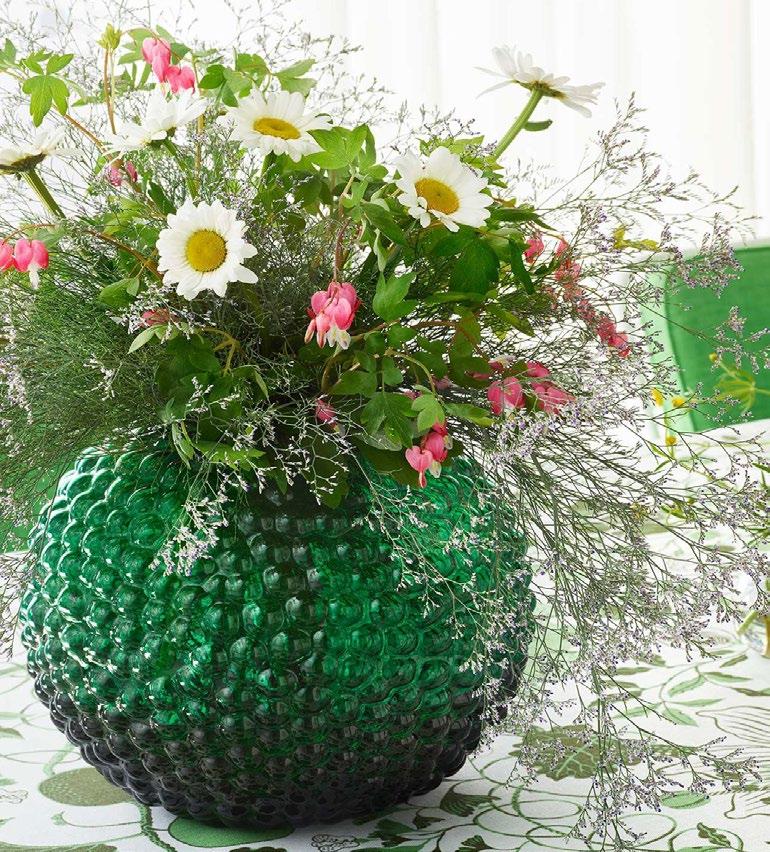
9 minute read
in The workShoP wiTh
Marketing & Creative Director of Stockholm’s legendary Svenskt Tenn
THOMMY BINDEFELD
Advertisement
One of the most creative, colorful and interesting companies I have come across in all of my world travels is Svenskt Tenn. In a country and culture known for its design excellence, Svenskt Tenn stands alone as the design visionary of Sweden.
I was thrilled when Thommy Bindefeld agreed to be interviewed for this summer issue of INSPIRED. I really enjoyed insights into the daily life of a creative director and a bit more about this fascinating company.

SVENSKT TENN
But before I share the interview, I felt it would be meaningful to give you a brief history of Svenskt Tenn…

Estrid Ericson, an art teacher and pewter artist, launched Svenskt Tenn (“Swedish Pewter”) in Stockholm in 1924 in order to make and sell her pewter objets d’ art. She was a true visionary. The company soon expanded to include furniture and interior design, and Ms. Ericson collaborated with a variety of hand-selected artists and designers. Meanwhile, Josef Frank, a renowned Austrian architect and former professor of Building Design at the Vienna School of Arts and Crafts, left Austria for Stockholm with his Swedish wife, Anna, to escape the antisemitism that was expanding in Austria. He was known for his unique style of modernism, embracing color, comfort and artistic style. He joined Svenskt Tenn in 1934 as chief designer. Together, Ms. Ericson and Professor Frank’s brilliant collaboration, which spanned decades, created a unique design aesthetic combining a mix of classic and modern design, exuberant color, natureinspired patterns and simple forms to create an exclusive collection of furniture, lighting, textiles, wallpaper as well as accessories. Professor Frank left upwards of 2000 furniture sketches and 160 textile prints with the company and remains one of Sweden’s most influential designers in history. Many of his creations are still in production. Ms. Ericson remained at the helm of her company until 1975, when it was sold to the Kjell and Märta Beijer Foundation, with a promise to preserve her vision for Svenskt Tenn. 45 years later the foundation continues making good on their promise by not only preserving the company’s core values established at the very beginning, but by donating ALL profit to research in the areas of environmental sustainability, genetics, biomedicine and pharmaceuticals. Truly remarkable!

I would say that no day is like the other one… I have a team that works with all visual parts of the brand; exhibitions, the look of the shop in Stockholm, our web and product development. I’m also responsible for our design collaborations and in all the ways our brand is used and communicated. I’m also part of the board of directors. This means that I’m (normally, when there’s not a global pandemic) most of the time, in some way, leading my team in meetings and discussions on products and aesthetics, from general questions to details.
Since I have a background as a designer myself, I have a great respect for other people’s creativity and my way of working is very respectful to other people’s knowledge. If I give an idea or an assignment to somebody that I trust, I let that person go all the way and don’t interfere in their creative process. When I see the result, I can give my input, but not during the process. Another important lesson I have learned is that ‘time’ is the most important ingredient in making long lasting, high quality, good design. You can never stress any part of the process, the designing, the prototyping nor the production.
For me the Svenskt Tenn aesthetics is very far from ‘Lagom’, in that sense Svenskt Tenn is not typical Swedish. Maybe that’s why it is so appreciated both in Sweden and abroad. One has to have in mind that Josef Frank came from central Europe and had his origin in another aesthetics and heritage.
What is an important skill you have learned while you’ve been working in this industry?
My daughter was telling me about the Swedish word, Lagom, and that it’s a key part of Swedish culture. Is lagom something that is represented in the company?
“There’s nothing wrong with mixing old and new, with combining different furniture styles, colours and patterns. Things that you like will automatically fuse to form a relaxing entity.” - Josef Frank -
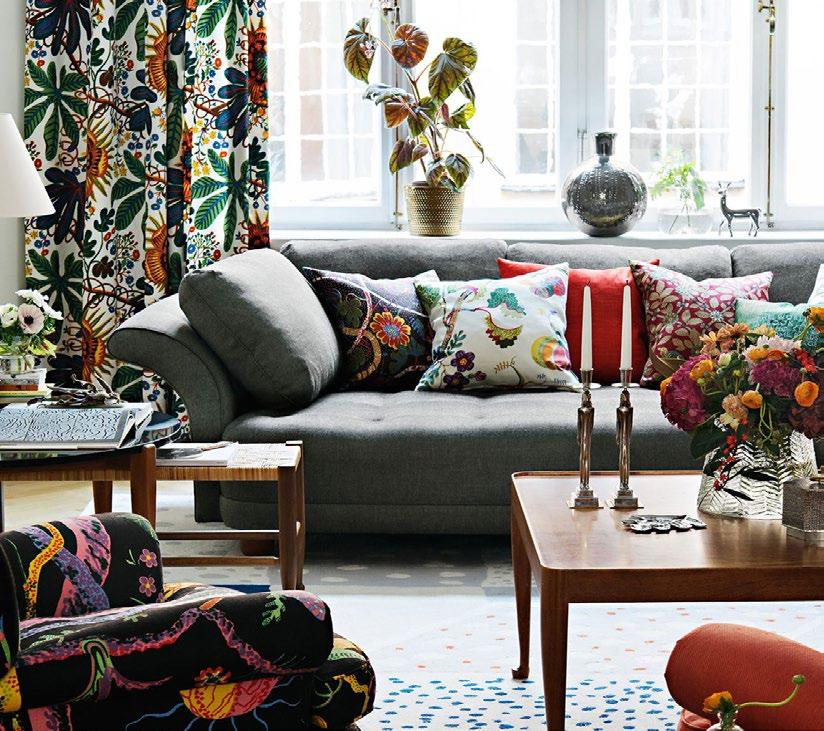


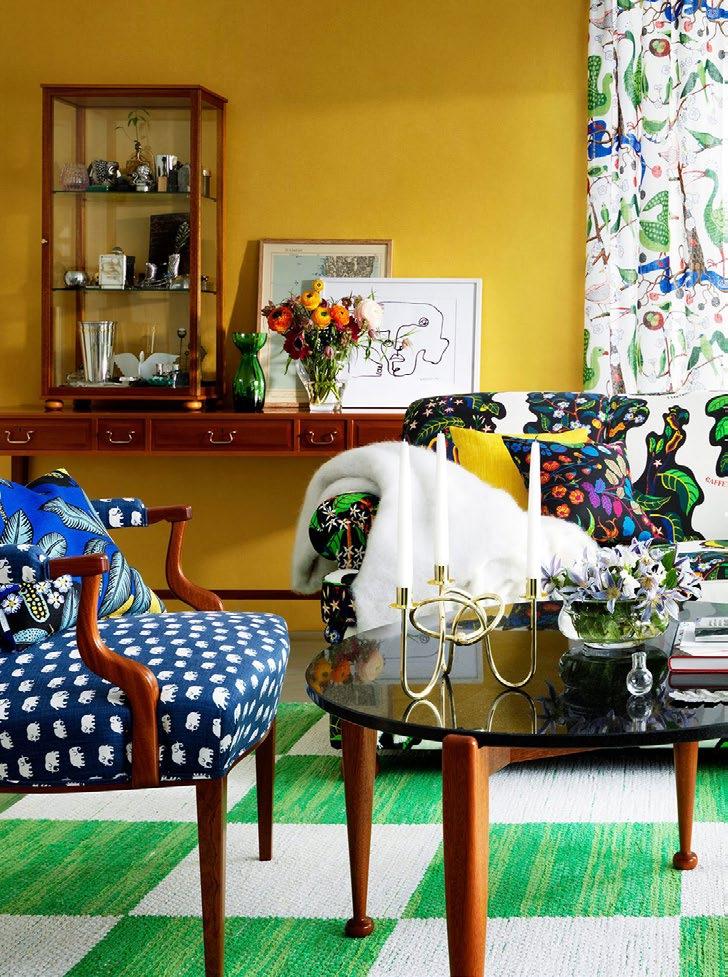

What sets Svenskt Tenn apart from other companies like yours in Sweden, Scandinavia or Europe?
I have never, during my years in retail, heard of a company that is owned by a foundation and that all profit is given to research. On top of that, part of our task is to secure a unique heritage for the future, the heritage of the founder Estrid Ericson, a strong and determined woman who, in 1924, started her own company, as well as the heritage of one of the greatest designers and architects of his time, Josef Frank.
Being owned by a foundation means that we can look at all our decisions with a very long perspective and that profit is important (to continue supporting research) but securing the brand for the future is as important. How has the business evolved in the past 10-20 years for your products and where do you see it going from here?
I see that the interest for good quality, craftsmanship and viewing a product from a sustainable perspective has grown immensely. Customers are more and more interested in the background of a company, how the company is run and the history behind each and every product. I hope and believe that after the crisis we are in right now, when we come out on the other side, we will be even more conscious about what we buy and how things are produced. If you buy a good quality product, you can have it for the rest of your life and the next generation can inherit it. That is sustainable!
Where do most of your customers come from?
Of course, we can’t really tell where the customers visiting the shop come from, but we know that we have a lot of visitors coming from abroad. Online we can see that after Sweden, most customers come from Scandinavia, the US and UK and Germany. I guess that these are the markets where Svenskt Tenn aesthetics are appreciated.
What would you like people in the US to understand about your company that you don’t think they do right now?
I’m very proud to work at a company where all profit is given to research, to a good cause for mankind and coming generations (instead of into a private owner’s pocket) and that we, by doing what we are doing, are securing some craftsmanship that otherwise would die out. The knowledge of some craft is sadly going to die with a generation that is not going to be around for much longer, and this is happening all over the world.
Do you distribute your products through any showrooms in the US?
No, we only have the one shop in Stockholm and for the rest of the world we sell online. This is a way to not over-exploit the brand, the heritage and the limited amount of designs by Josef Frank. It’s a way to see to that the brand can live forever.

What are your top 3 Places where you seek inspiration in Sweden?
Art and design museums such as Nationalmuseum in Stockholm and Röhsska in Gothenburg. Swedish nature - the forest as well as the clean and soft cliffs on the Swedish west coast. Everything! I spend a lot of time in my garden during spring and summer, and that gives me time to think and reflect. It’s very inspiring to see what new young designers do and to work with them. I do a few projects every year with students at the design schools here in Stockholm, which is very inspiring and enjoyable.
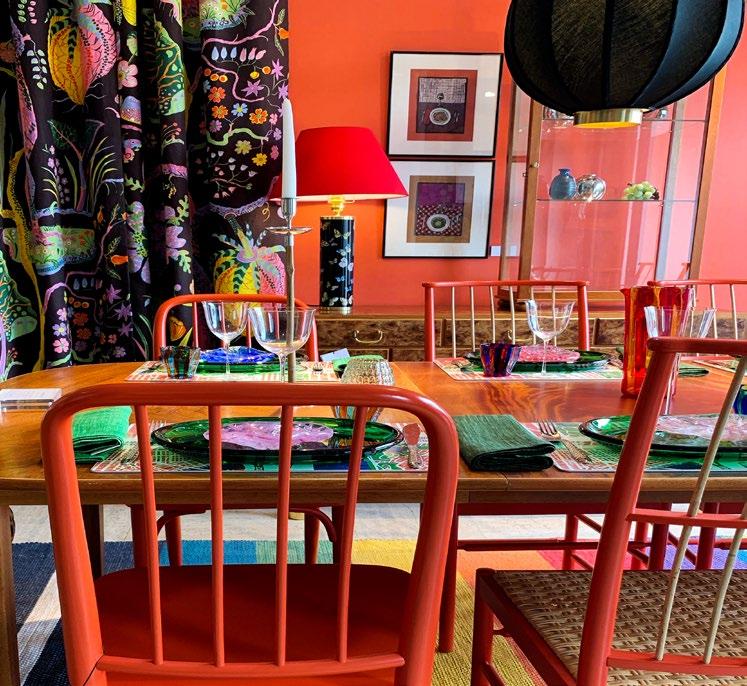

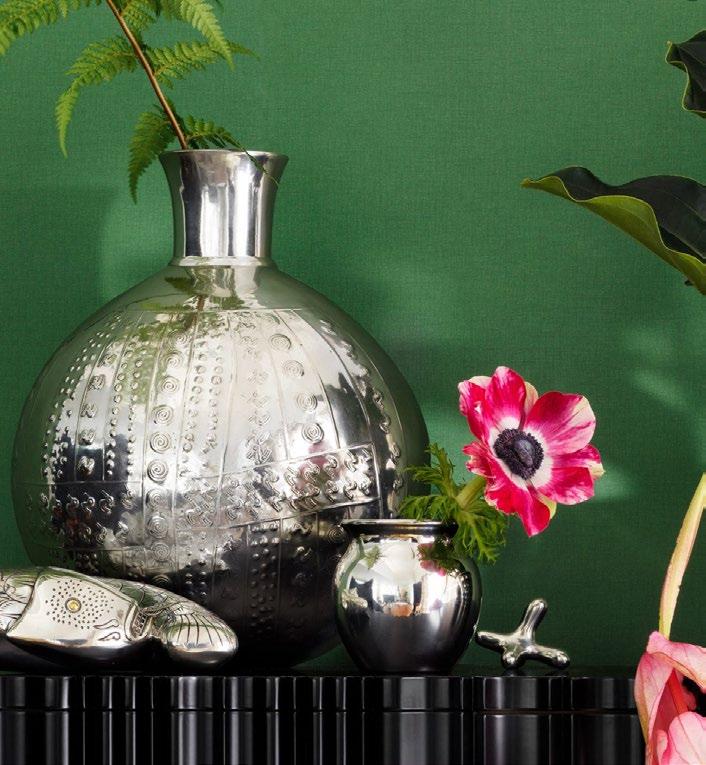
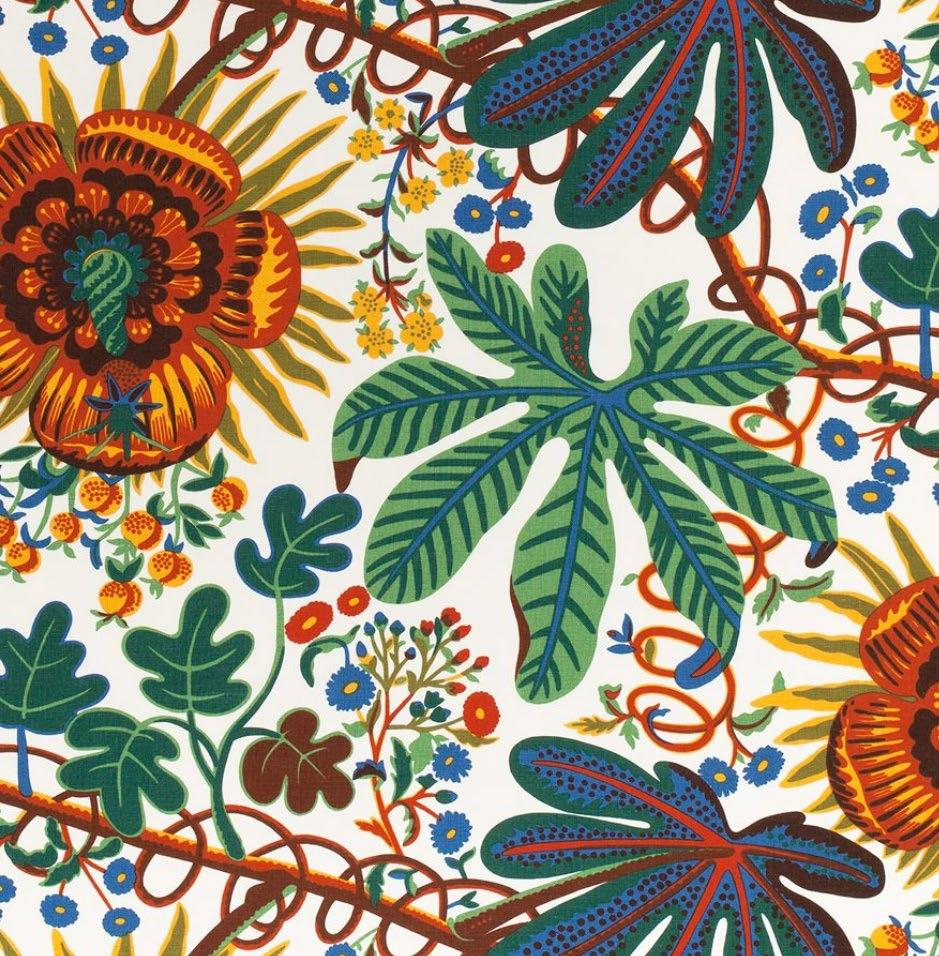
How do you select the contemporary product designers (accessories, lighting, housewares) you choose to collaborate with and carry in your shop?
I look for designers that have an aesthetic that somehow connects with Josef Frank and the aesthetics we work with. But sometimes it is also interesting to work with a designer that has a different design language like, for example, the Finnish designer, Harri Koskinen, who normally reduces and takes away. For us, he instead added and did two beautiful lamps that really work well at Svenskt Tenn.
Since his design is the foundation of our design, everything that we add also had a connection to or inspiration from nature.
Josef Frank’s iconic textile designs were obviously inspired by botany. How does nature continue to inspire products into their design projects?
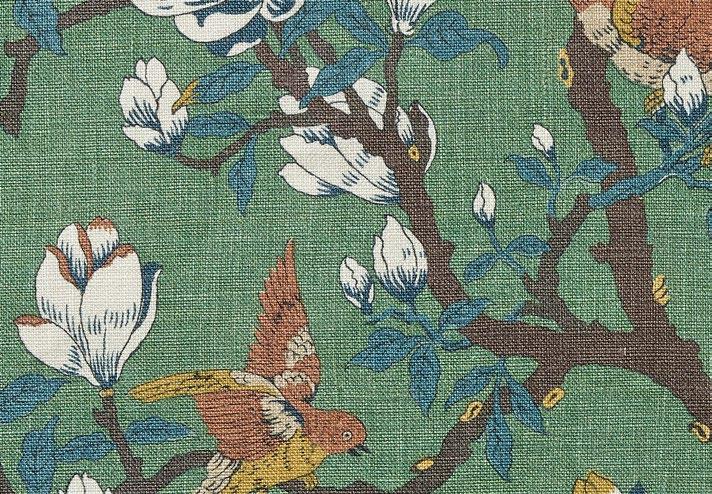

How do you look at the use of color and pattern at Svenskt Tenn? It’s quite a contrast from the typical Swedish aesthetic of clean lines and simplicity. products into their design projects?
It’s often said that Josef Frank brought color to Sweden, which is not really true if you look at historical arts and crafts, but he certainly brought color to Sweden at a time when functionalism, minimalism and modernism were at their peak. From the time of the World Exhibition in Stockholm in 1930, the sober and “color-less” became synonymous with Swedish design. What are the 3 all-time favorite textile patterns and 3 all-time favorite items customers love to purchase from Svenskt Tenn?
- Prints - Gröna Fåglar (Green birds) Teheran Manhattan

- Classic Designs - The candleholder Vänskapsknuten (The Knot of Friendship) The Wellpapp (Corrugated) cabinet The Liljevalchs sofa
- New Designs - The Dagg vase (design - Carina Seth Andersson) The Flask vase (design - Michael Anastassiades) Fabric Anacapri (design - Lars Nilsson)
